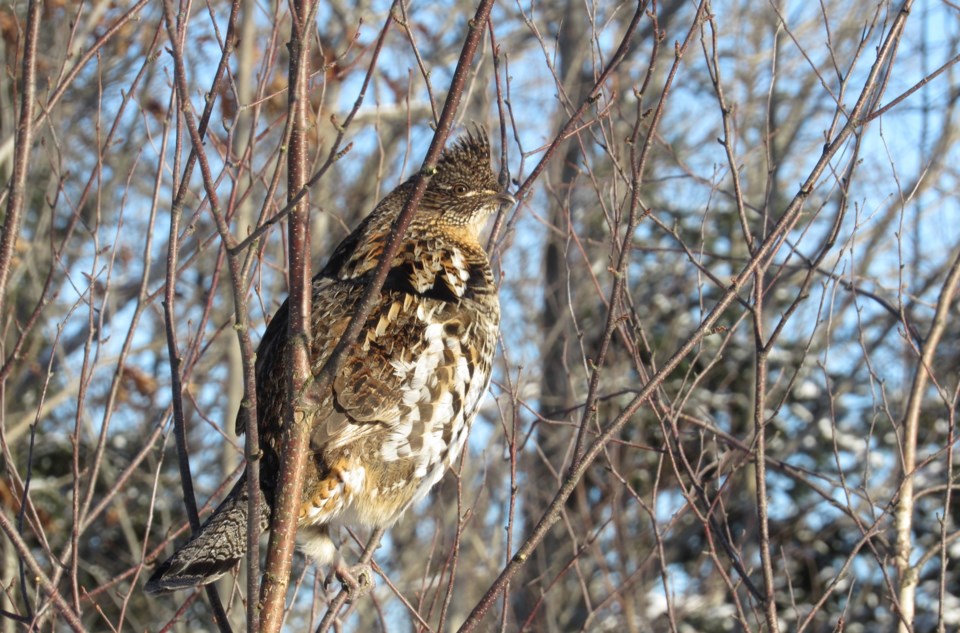NEWS RELEASE
THE KENSINGTON CONSERVANCY
*************************
The second annual Desbarats Christmas Bird Count took place on Dec. 30 and many birds were recorded in the Desbarats area. Forty participants volunteered their time and a total of 2,324 birds were counted with 39 different species accounted for.
Eighteen field observers braved the cold weather and were able to find some decent birds. A Northern Hawk Owl was heard before sunrise on St. Joseph Island. A Hermit Thrush, a White-Throated Sparrow and a Common Grackle, all rare birds for the winter months, were found as well.
There were 22 feeder watchers at 13 different feeder stations throughout the count circle. The highlight feeder bird was a Red-Winged Blackbird coming to a feeder in the Desbarats area, another seasonal rarity. One feeder watcher on St. Joseph Island had a Northern Goshawk fly over their house. Other feeder birds recorded include Red-Bellied Woodpecker, Dark-Eyed Junco and Purple Finch.
Thanks to an increase in participant numbers, the bird numbers also increased. Last year, only 1,532 birds and 35 species were recorded.
Started in 1900, the Christmas Bird Count is North America's longest-running Citizen Science project. Counts happen in over 2,000 localities throughout the Western Hemisphere. The information collected by thousands of volunteer participants forms one of the world's largest sets of wildlife survey data. The results are used daily by conservation biologists and naturalists to assess the population trends and distribution of birds.
A big thanks goes out to everyone who participated and made this happen. We are already looking forward to next year’s count!
The full results for the 2017 Desbarats Christmas Bird Count can be viewed here on The Kensington Conservancy’s website.
*************************
